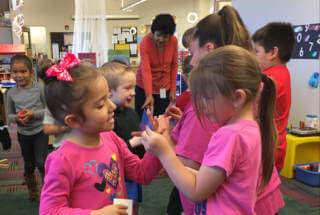This feature of SIOP lays down the marker and reminds teachers that engaging in discussions with the teacher and one's peers is something we should strive to offer our students. Through discussions, we "think through things," make connections, and practice oral language expression/persuasion/etc. Just how important do students think it is to be able to talk to their peers? Well, just ask them!
Notice there are two parts to this feature. The first suggests that teachers need to maximize opportunities to interact and discuss with the students. The second suggests the teacher encourage students to think critically by exploring concepts and providing more than just one-word answers. The inclusion of discussion time provides the teacher with the opportunity to connect with students and to assess their thinking in a formative manner. In fact, even more powerful than teacher-student discussions are student-student discussions. They still provide teachers with opportunities for assessment (perhaps even more so), and the increase the number of opportunities the students have to share with one another. This, after-all, is what most students crave.

So, the question is not, "should I give my students a chance to discuss things?" The question is, "how should I structure discussions so that students get the most (academically) out of them?" Here are three tips on making sure the discussion is worth it:
Click the button below to claim your free ebook and join our mailing list.